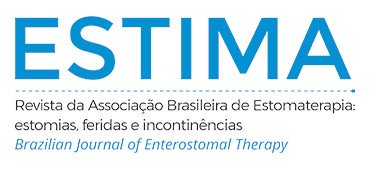NURSING TEAM KNOWLEDGE ABOUT PRESSURE INJURIES
Abstract
Objective: to assess the level of knowledge of the nursing staff of the medical clinic of a university hospital about pressure injuries. Method: descriptive-exploratory study, approved by the Research Ethics Committee. Data were collected through a validated questionnaire. Fifty individuals participated, 35 nursing technicians and 15 nurses. Results: nursing technicians had an average of 83.5% and nurses had an average of 89.9%. A regression model was carried out to verify variables that influence the level of knowledge, and it was identified that having more than 5 years in the profession increases 1.61 times the chance that the professional has adequate knowledge. Conclusion: a weakness in knowledge about pressure injuries was identified. In view of the costs involved in the treatment and complications arising from these injuries, health institutions must implement educational actions about this condition.
Downloads
Metrics
References
Sassaki RL, Cucolo DF, Perroca MG. Interruptions and nursing workload during medication administration process. Rev Bras Enferm. 2019;72(4):1001-6. http://doi.org/10.1590/0034-7167-2018-0680
Agência Nacional de Vigilância Sanitária (BR). Nota técnica GVIMS/GGTES n° 03/2017: Práticas seguras para prevenção de Lesão por Pressão em serviços de saúde. Brasília (DF); 2017 [acesso em 30 jul 2021]. Available at: https://www.gov.br/anvisa/pt-br/centraisdeconteudo/publicacoes/servicosdesaude/notas-tecnicas/nota-tecnica-gvims-ggtes-no-03-2017.pdf
National Pressure Ulcer Advisory Panel. National Pressure Ulcer Advisory Panel Responds to Editorial. Adv Skin Wound Care. 2016;29(12):535. https://doi.org/10.1097/01.ASW.0000508227.61503.f9
Rabeh SAN, Palfreyman S, Souza CBL, Bernardes RM, Caliri MHL. Cultural adaptation of the Pieper-Zulkowski Pressure Ulcer Knowledge Test for use in Brazil. Rev Bras Enferm. 2018;71(4):2092-100. https://doi.org/10.1590/0034-7167-2017-0029
Barbosa JM, Salomé GM. Occurrence of pressure injury in patients hospitalized in a school hospital. ESTIMA, Braz. J. Enterostomal Ther. 2018;16:e2718. https://doi.org/10.30886/estima.v16.523
Kayser SA, VanGilder CA, Ayello EA, Lachenbruch C. Prevalence and Analysis of Medical Device-Related Pressure Injuries: Results from the International Pressure Ulcer Prevalence Survey. Adv Skin Wound Care. 2018;31(6):276-85. https://doi.org/10.1097/01.ASW.0000532475.11971.aa
Rabeh SAN, Gonçalves MBB, Caliri MHL, Nogueira PC, Miyazaki MY. Terapia tópica para heridas crónicas: contribuciones de un módulo de enseñanza a distancia para el conocimiento de estudiantes de enfermería. Enfermería Global. 2017;16(1):69-101.https://doi.org/10.6018/eglobal.16.1.237361
National Pressure Ulcer Advisory Panel; European Pressure Ulcer Advisory Panel; Pan Pacific Pressure Injury Alliance. Prevention and Treatment of Pressure Ulcers: Quick Reference Guide. Emily Haesler (Ed.). Cambridge Media: Osborne Park (Aus); 2019. Available at: https://www.epuap.org/download/11182/
Galvão NS, Serique MAB, Santos VLCG, Nogueira PC. Knowledge of the nursing team on pressure ulcer prevention. Rev Bras Enferm. 2017;70(2):294-300. https://doi.org/10.1590/0034-7167-2016-0063
De Meyer D, Verhaeghe S, Van Hecke A, Beeckman D. Knowledge of nurses and nursing assistants about pressure ulcer prevention: A survey in 16 Belgian hospitals using the PUKAT 2.0 tool. J Tissue Viability. 2019;28(2):59-69. https://doi. org/10.1016/j.jtv.2019.03.002
Charalambous C, Koulouri A, Roupa Z, Vasilopoulos A, Kyriakou M, Vasiliou M. Knowledge and attitudes of nurses in a major public hospital in Cyprus towards pressure ulcer prevention. J Tissue Viability. 2019;28(1):40-45. https://doi.org/10.1016/j.jtv.2018.10.005
Damme NV, Hecke AV, Himpens A, Verhaeghe S, Beeckman D. Design and psychometric testing of the attitude towards the prevention of incontinence-associated dermatitis instrument (APrIAD). Int Wound J. 2019;16(2):492-502. https://doi.org/10.1111/iwj.13062
Pieper B, Mott M. Nurses’ knowledge of pressure ulcer prevention, stating, and description. Adv Wound Care. 1995 [acesso em 05 ago 2021];8(3):34-48. Available at: http://europepmc.org/abstract/med/7795877
Fernandes LM, Caliri MHL, Haas VJ. The effect of educative interventions on the pressure ulcer prevention knowledge of nursing professionals. Acta Paul Enferm. 2008 [acesso em 21 jul 2021];21(2):305-11. Available at: http://www2.unifesp.br/acta/pdf/v21/n2/v21n2a12.pdf
Sousa RC, Faustino AM. Conhecimento de enfermeiros sobre prevenção e cuidados de lesão por pressão. Fundam Care Online. 2019;11(4):992-7. http://doi.org/10.9789/2175-5361.2019.v11i4.992-997
Albuquerque AM, Vasconcelos JMB, Souza APMA, Chaves TRCL, Costa IKF, Soares MJGO. Knowledge test on pressure injury. Revenferm UFPE on line. 2018;12(6):1738-50. https://doi.org/10.5205/1981-8963-v12i6a234578p1738-1750-2018
Portugal LBA, Chirstovam BP, Mendonça RP. The nurses’ knowledge about pressure injury care. Revista Enfermagem Atual. 2018;84(22):59-68. http://.doi.org/10.31011/1519-339X.2018a18n84.5
Gul A, Andsoy II, Ozkaya B, Zeydan A. A Descriptive, Cross-sectional Survey of Turkish Nurses’ Knowledge of Pressure Ulcer Risk, Prevention, and Staging. Ostomy Wound Manage. 2017 [acesso em 04 ago 2021];63(6):40-46. Available at: https://www.owm. com/article/descriptive-cross-sectional-survey-turkish-nurses-knowledge-pressure-ulcer-risk-prevention
Ceccim RB. Emergência de um “campo de ação estratégica”: ordenamento da formação e educação permanente em saúde. SANARE. 2019 [acesso em 07 set 2021];18(01):68-80. Available at: https://sanare.emnuvens.com.br/sanare/article/download/1307/688
Lavich CRP, Terra MG, Mello AL, Raddatz M, Arnemann CT. Ações de educação permanente dos enfermeiros facilitadores de um núcleo de educação em enfermagem. Rev Gaúcha Enferm. 2017;38(1):e62261. http://doi.org/10.1590/1983-1447.2017.01.62261
Flores GE, Oliveira DLL, Zocche DAA. Permanent education in the hospital context: the experience that brings new meaning to nursing care. Trab. Educ. Saúde. 2016;14( 2):487-504. http://doi.org/10.1590/1981-7746-sip00118
Inagaki ADM, Souza IES, Araujo ACL, Abud ACF, Cardoso NP, Ribeiro CJN. Conhecimento de médicos e enfermeiros atuantes no pré-natal sobre toxoplasmose. Cogitare enferm. 2021;26:e70416. http://doi.org/10.5380/ce.v26i0.70416
Downloads
Published
How to Cite
Issue
Section
License
Copyright (c) 2021 Jaqueline Aparecida dos Santos Sokem, Elaine Aparecida Mye Takamatu Watanabe, Adriano Menis Ferreira, Lillian Dias Castilho Siqueira, Manuela de Mendonça Figueirêdo Coelho, Fabiana Perez Rodrigues Bergamaschi

This work is licensed under a Creative Commons Attribution 4.0 International License.

























